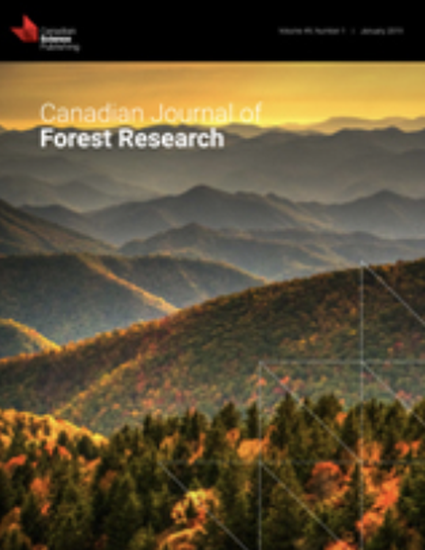
Article
Potential effects of ozone, climate, and spruce budworm on Douglas-fir growth in the Wasatch Mountains
Canadian Journal of Forest Research
(2003)
Abstract
This study assessed the potential for ozone injury to vegetation in the central Wasatch Mountains of Utah, USA by determining if Douglas-fir ( Pseudotsuga menziesii var. glauca) experienced reduced growth since the onset of high ozone concentrations. Dendrochronological techniques were used to model Douglas-fir growth in six central Wasatch Mountain stands, where ozone concentrations suggest the possibility of injury to vegetation, and in four Bear River stands, where ozone concentrations are lower than injury thresholds. Previous-year growth, temperature, and Palmer's Z index variables explained 53-70% of the variance in annual growth. Reduced Douglas-fir growth, not explained by the model or insect and disease records, occurred after 1970 in the central Wasatch Mountains but not in the Bear River Mountains. Douglas-fir growth in the central Wasatch Mountains was slightly negatively correlated with the previous-year ozone concentrations in nearby Salt Lake valley. Between 1962 and 1973, a fluctuating budworm ( Choristoneura occidentalis) population due to varying spring precipitation was suggested to have replaced precipitation as the factor limiting tree growth, causing an anomalous negative relationship between precipitation and Douglas-fir growth. Because of a suite of possible factors (e.g., undetected climatic variables, fungal pathogens, competitive interactions) influencing Douglas-fir growth, ozone may be one factor in a larger stressor complex reducing growth.
Disciplines
Publication Date
August, 2003
DOI
https://doi.org/10.1139/x02-211
Citation Information
Fred A. Baker. "Potential effects of ozone, climate, and spruce budworm on Douglas-fir growth in the Wasatch Mountains" Canadian Journal of Forest Research Vol. 33 Iss. 5 (2003) p. 910 - 921 Available at: http://works.bepress.com/fred_baker/26/
